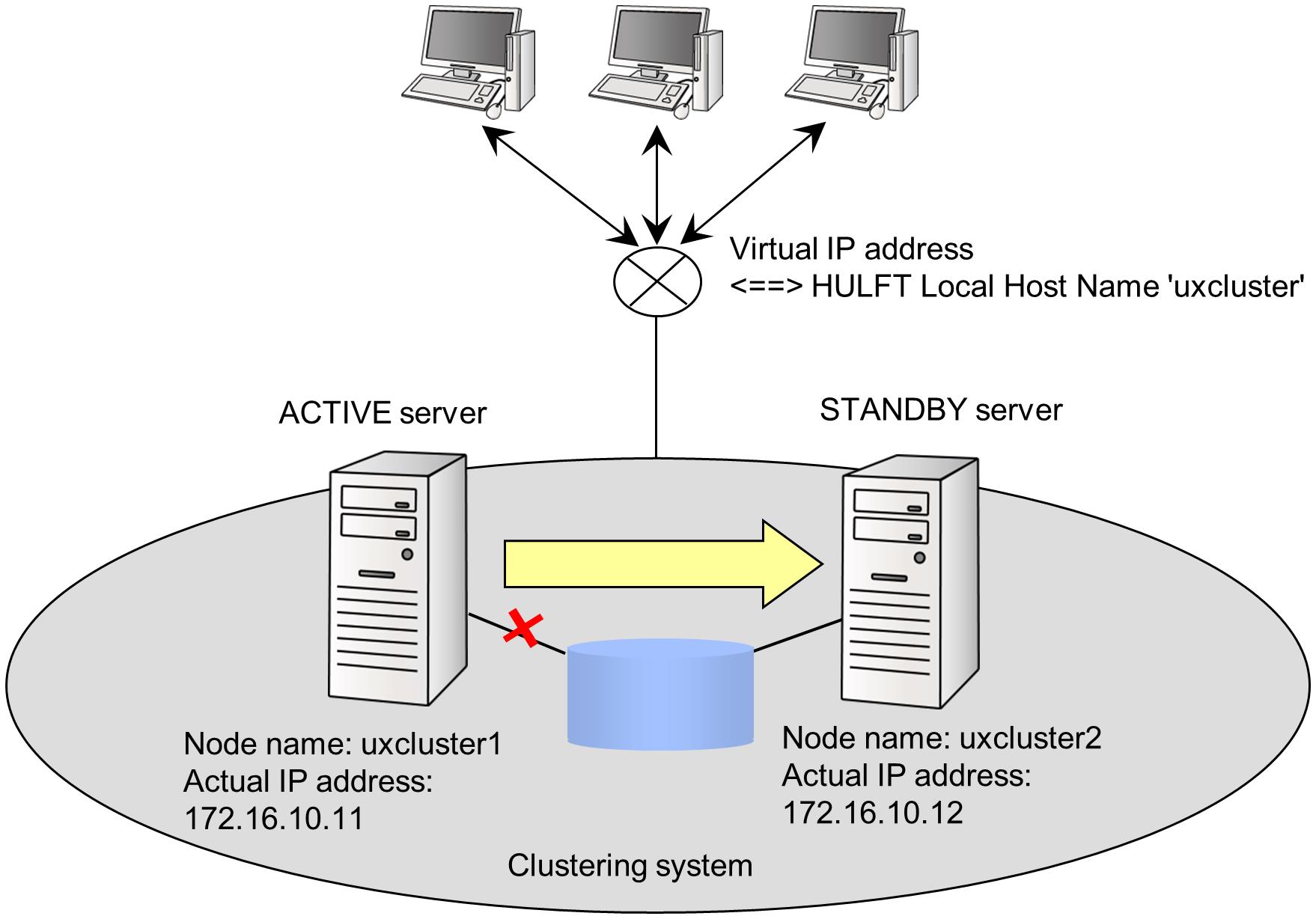Clustering system and remote host connection
The remote host must be able to communicate with the local host using the local host name of HULFT. Register the virtual IP address and linked local host name of HULFT to the DNS or the 'hosts' file so that the virtual IP address can be looked up using the local host name. This allows HULFT access via the same IP address (virtual IP address) and host name (virtual host name) even in the event of a failover.
<Setting example>
|
Local Host Name for HULFT |
: |
uxcluster |
|
Virtual IP address |
: |
172.16.10.10 |
ACTIVE server
|
Node name |
: |
uxcluster1 |
|
Actual IP address |
: |
172.16.10.11 |
STANDBY server
|
Node name |
: |
uxcluster2 |
|
Actual IP address |
: |
172.16.10.12 |

Figure 3.2 Example Configuration of Host Name and IP Address
<Example of remote side 'hosts' file>
172.16.10.10 uxcluster
The actual IP address or node name may be displayed in a log or in the console logs of the remote host. However, this does not cause abnormal behavior with HULFT.
For methods to prevent this phenomenon, refer to Notes on connecting from HULFT in a clustering environment.